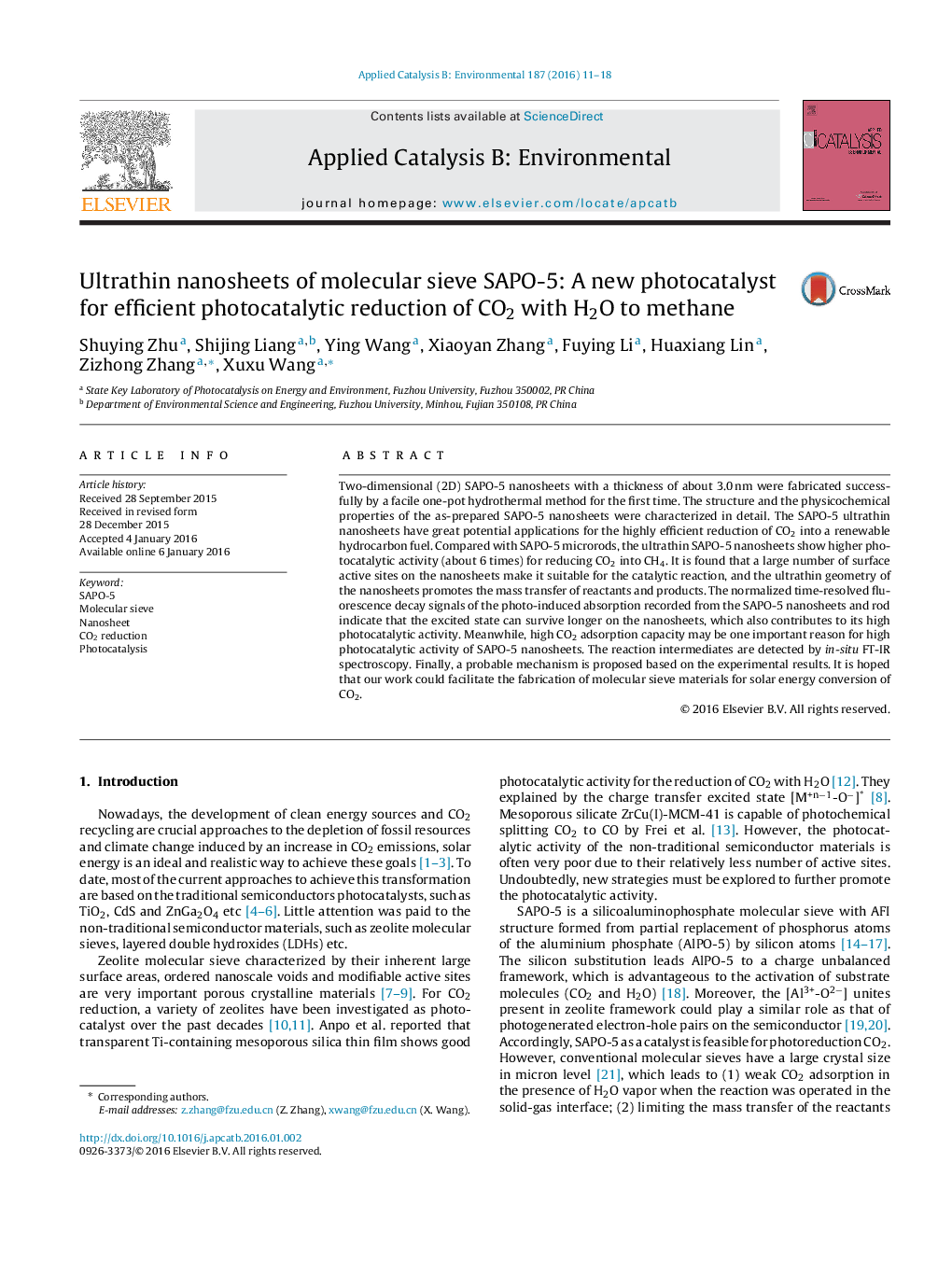| کد مقاله | کد نشریه | سال انتشار | مقاله انگلیسی | نسخه تمام متن |
|---|---|---|---|---|
| 45081 | 46396 | 2016 | 8 صفحه PDF | دانلود رایگان |

• 2D SAPO-5 nanosheets with a thickness of about 3.0 nm are successfully prepared.
• SAPO-5 nanosheets show superior activities for the photoreduction of CO2 into CH4.
• The high activity is ascribed to ultrathin geometry and more surface active sites.
• The surface CO2− is an active intermediate of CO2 reduction on SAPO-5 nanosheets.
Two-dimensional (2D) SAPO-5 nanosheets with a thickness of about 3.0 nm were fabricated successfully by a facile one-pot hydrothermal method for the first time. The structure and the physicochemical properties of the as-prepared SAPO-5 nanosheets were characterized in detail. The SAPO-5 ultrathin nanosheets have great potential applications for the highly efficient reduction of CO2 into a renewable hydrocarbon fuel. Compared with SAPO-5 microrods, the ultrathin SAPO-5 nanosheets show higher photocatalytic activity (about 6 times) for reducing CO2 into CH4. It is found that a large number of surface active sites on the nanosheets make it suitable for the catalytic reaction, and the ultrathin geometry of the nanosheets promotes the mass transfer of reactants and products. The normalized time-resolved fluorescence decay signals of the photo-induced absorption recorded from the SAPO-5 nanosheets and rod indicate that the excited state can survive longer on the nanosheets, which also contributes to its high photocatalytic activity. Meanwhile, high CO2 adsorption capacity may be one important reason for high photocatalytic activity of SAPO-5 nanosheets. The reaction intermediates are detected by in-situ FT-IR spectroscopy. Finally, a probable mechanism is proposed based on the experimental results. It is hoped that our work could facilitate the fabrication of molecular sieve materials for solar energy conversion of CO2.
Figure optionsDownload as PowerPoint slide
Journal: Applied Catalysis B: Environmental - Volume 187, 15 June 2016, Pages 11–18